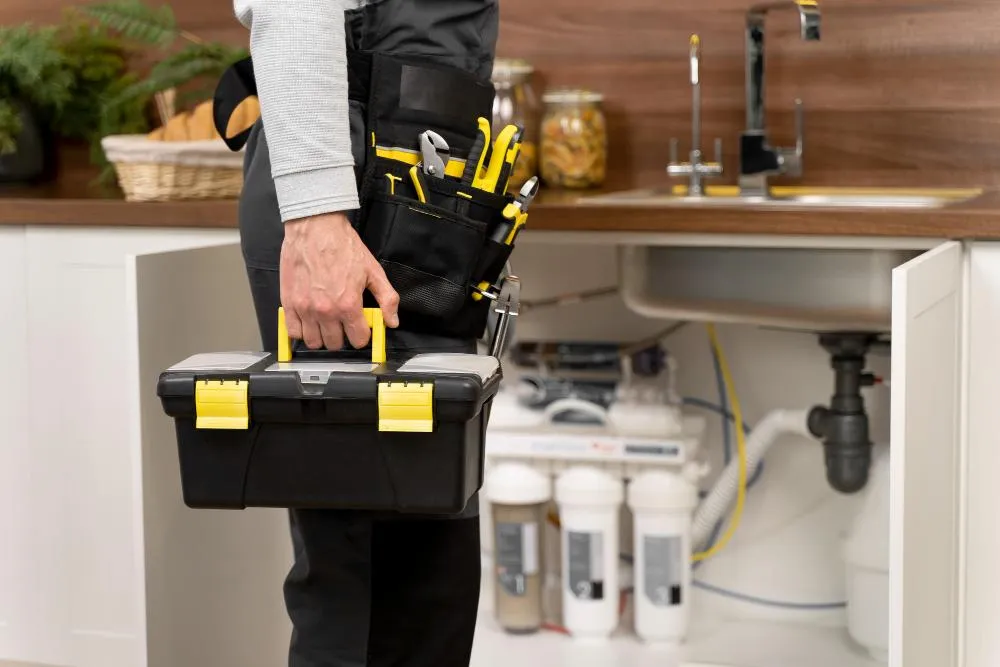
Emergency Plumbing Prep: What Every Alberta Household Needs to Know
Disasters don’t wait for convenient times. A burst pipe on a freezing Alberta night, a sudden backflow in spring, or a broken water heater during a deep freeze—these are exactly the plumbing emergencies you want to avoid.
This guide helps Alberta homeowners prepare for plumbing emergencies before they happen. You’ll learn the smart precautions, tools to have, what to inspect regularly, and how to respond when things go wrong.
By the end, you’ll feel more confident in your home’s readiness, reducing damage, cost, and stress when plumbing fails.
Why Emergency Plumbing Prep Is Essential in Alberta
In Alberta’s climate, plumbing systems face extra challenges:
Deep freezes that can cause pipes to burst
Thaw cycles that shift soil and stress foundations
Heavy precipitation or sudden snowmelt flooding basements
Aging plumbing in older homes
Power outages that disable pumps, alarms, or heat
When a plumbing failure strikes, it can lead to water damage, mold, structural issues, contaminated water, lost possessions, and high repair bills. Preparation is your best defense.
Good emergency plumbing prep reduces response time, damage, and long-term repair costs.
What Emergency Plumbing Preparation Entails
Here are core components of good plumbing preparedness:
Emergency shutoff knowledge and access
Know where your main water shutoff valve is, how to operate it quickly, and make sure it's in good working condition (not stuck or corroded).Backup power or manual tools
A manual pump or battery-powered sump pump, a flashlight, spare batteries, and basic wrenches allow temporary control.Essential spare parts kit
Include pipe couplings, rubber pipe repair sleeves, hose clamps, plumbers' tape, spare washer sets, and a roll of impermeable tape.Inspection and maintenance schedule
Check exposed pipes, faucets, joint seals, and appliances seasonally (especially before winter). Flush, clean or winterize as needed.Pressure relief and overpressure protection
Ensure pressure relief valves on water heaters are working. Install pressure regulating valves if your system pressure fluctuates.Drain and trap maintenance
Clean drains and traps regularly. Keep sink and floor drains free of debris so water can flow away.Flood sensors or alarms
Place sensors around sump pits, washing machines, dishwashers, or areas prone to leaks to get early warning.Emergency contacts list
Save your plumbing service phone, gas company, local utility emergency line, and your own checklist in a visible spot.Documentation & map of your plumbing layout
Keep a simple drawing of your plumbing lines, shutoff points, and appliances to guide emergency fixes.
How to Respond During a Plumbing Emergency
When disaster strikes, follow this sequence to minimize damage:
Stop the source
Immediately shut off your main water valve (or local valve near the failed section).Power control
If water is approaching electrical outlets or devices, shut off power in affected zones if safe to do so.Drain residual water
Open faucets at high and low points to relieve pressure and drain remaining water.Contain the leak or spread
Use buckets, towels, or waterproof materials to redirect water away from walls or valuables.Assess damage & act temporarily
Use repair sleeves, clamps, or tape to temporarily seal minor leaks until a professional arrives.Call a professional plumber
After stabilizing, contact a licensed plumber to make permanent repairs.Document the damage
Take photos/video for insurance, and note what you did to mitigate damage.Follow up with inspection
After repair, have the plumber inspect adjacent plumbing, hidden areas, foundation, and affected finishes.
FAQs (Answer Stacking)
Q: How often should I test my main shutoff valve?
A: At least twice per year. Operate it fully open and closed to ensure it isn’t frozen or seized.Q: Can I use duct tape to temporarily patch a burst pipe?
A: Duct tape or plumber’s tape can serve as a very temporary measure, but isn’t a reliable long-term solution. Use proper repair sleeves or hose clamps until permanent repair.Q: Are electric sump pumps reliable in power outages?
A: Not usually without backup power. For emergencies, battery or generator backup is highly recommended.Q: When is the best time to winterize plumbing?
A: Before the first heavy freeze. Insulate exposed pipes, drain exterior lines, and ensure water system pressure relief is functioning.Q: Should I shut off water when leaving home long term?
A: Yes. Shutting off the main valve when away helps prevent damage from unexpected leaks or pipe failures.
Conclusion
Plumbing emergencies can be destructive, but with thoughtful preparation you can reduce their impact. Having the right tools, knowing shutoff points, doing regular inspections, and responding immediately protects your home, your belongings, and your wallet.
If you want a checklist formatted with step-by-step actions and printable layout or even a Word version for your clients, I can create that next